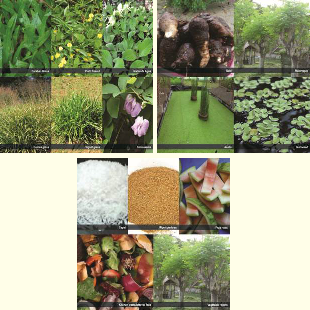Native chicken is commonly raised by most of the households in rural areas. It constitutes 46% of the total chicken population (76 million head). The native chicken industry allows participation of the rural poor in the production of high-quality chicken products that are paid premium prices. The Philippine Council for Agriculture, Aquatic and Natural Resources Research and Development of the Department of Science and Technology (DOST-PCAARRD), through its Industry Strategic Science and Technology Program (ISP) for Native Chicken, has developed guidelines to enhance these raisers’ pastures and range areas to further improve production.
The ideal range area for native chickens is fenced. It has to be grassy so that they can graze, perch, and dustbathe. Native chickens are left on their own to fend and find food for themselves. Because proper nutrition is important to keep the breeders healthy and produce more eggs, forage plays a very important role in range enhancement protocols and management strategies.
 Native chickens need essential nutrients such as carbohydrates, protein, fats and oils, minerals, vitamins, and water to survive, grow, and reproduce, but in cases where feed resources on range are not enough, raisers can do supplemental feeding. Supplemental feeding aims to reduce feed cost to 50% by substituting part of commercial feed with farm-mixed ration.
Native chickens need essential nutrients such as carbohydrates, protein, fats and oils, minerals, vitamins, and water to survive, grow, and reproduce, but in cases where feed resources on range are not enough, raisers can do supplemental feeding. Supplemental feeding aims to reduce feed cost to 50% by substituting part of commercial feed with farm-mixed ration.
Supplemental feeding is normally done in the morning and in the afternoon for the birds to develop their homing instinct. It also augments nutrients from natural feeds to promote optimum performance. A range area of at least 2 m2 per bird is recommended for free range area. Vegetation may be planted which would serve as food for breeder chickens.
The planting of edible vegetation improves the quality of the existing range area for native chicken. Good quality forages are nutritious, palatable, highly digestible, and non-toxic and has anti-nutrient compounds. Some forage species are carabao grass (Paspalum renggeri Steud.), pinto peanut (Arachis pintoi), Madre de Agua (Trichantera gigantea), Guinea grass (Panicum maximum), signal grass (Brachiaria decumbens), and centrosema (Centrosema pubescens).
Other forage species include ‘gabi’ (Colocasia esculenta), ‘malunggay’ (Moringa oleifera), Azolla, and duckweeds.
Raisers may also opt to use kitchen waste and farm by-products such as ‘sapal,’ rice/corn bran, fruit rinds, kitchen waste/leftover food, and vegetable rejects such as ‘pechay,’ ‘kangkong,’ ‘mustasa,’ sweetpotato, and ‘alugbati.’ Fresh drinking water should be provided at all times.
Many consumers prefer native chicken to commercial broilers because of its unique taste, distinct flavor and texture, lower fat content and presence of nutrients. Likewise, more farmers are choosing to raise native chicken as it provides livelihood in terms of food security, additional income, utilization of farm wastes and by-products, and fulfilment of other socio-cultural obligations. With so much depending on the health of the chickens, it is important to allow the animals to grow in their natural environment free of cages or artificial food. Through these simple guidelines, raisers can be assured of sustainable native chicken production.
